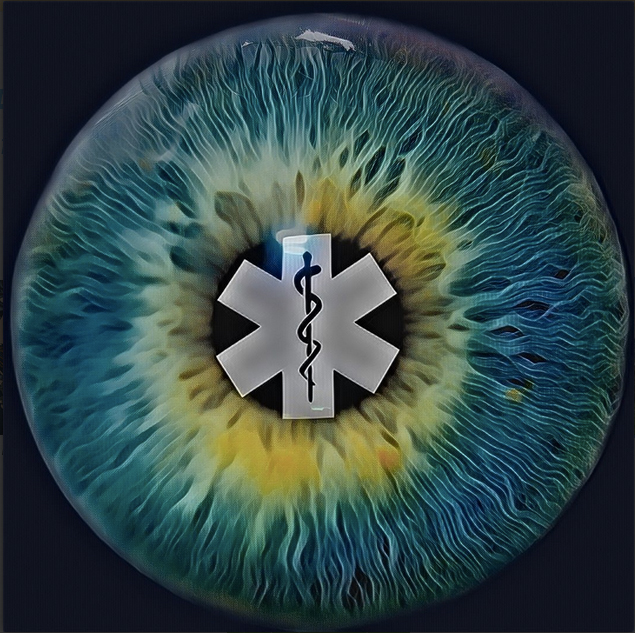Sabina Braithwaite, MD, MPH, NRP, FACEP
The current EMS Fellowship curriculum emphasizes clinical skills needed to be a competent EMS physician. In addition to medical knowledge, prehospital patient care, and systems-based practice, there are milestones for team and patient centered communication. These milestones focus on communication between EMS physician and EMS providers, EMS physician and patient, but do not expressly focus on communication between EMS physician and the public in general.

But unlike many other subspecialities of medicine, EMS is largely performed in public venues, now under the ever-watchful (and recording) eye of social media. When taking care of complex patients in a complex system, it is guaranteed that bad things will happen. When that day comes (and it will), EMS physicians must be prepared to be questioned privately, in public, on TV, in front of a county commission hearing, and who knows where else, about what their role in the EMS system is and why that bad thing happened.
Knowing this, we must make sure to prepare postgraduate EMS physicians with additional communication skills that are at best under-emphasized in the current curriculum. These skills are absolutely central to success as an EMS physician specifically, but also more broadly in any administrative role taken on.
One of these key skills is “messaging.” A message is a brief, value-based statement aimed at a targeted audience that captures a positive concept. This means that even when addressing a negative subject, the message should be positive. Without a firm grasp on messaging, it is pretty easy to get into trouble in any of a number of ways when bad things happen.
So how do you become effective at messaging? Here are my Top 6 tips:
1. Proactively work to get a positive public image. This isn’t too hard to do: EMS are the “good guys” that help people in need. But get that positive message out in front of the public, the funders (county / state government), and whoever else needs to know BEFORE the bad thing happens. Develop a positive relationship with your print / TV media so they know they can call on you for facts when “it” hits the fan. Get a reputation as an accessible expert who is part of a large team of folks there to help the public. Volunteer to do a piece on heat exhaustion in the summer when it gets hot, pool safety for Memorial Day weekend, etc. Every TV station in the land does those same pieces every year, and they will love you for not making them hunt someone down. That way when you almost inevitably end up in front of a microphone / camera on a bad day, at least you will have done it before under non-confrontational circumstances.
2. Always force yourself to write down the two or three bullet points that are the major message you want to get across. You have time to do this no matter what, and it will keep you focused so you don’t wander off down some rabbit hole. Have a “hook” that you can go back and rephrase, reiterate and come back to during the interview to emphasize your point. Remember the KISS principle (Keep It Simple, Stupid). Have a couple strong facts to support your points. Anticipate the negative questions you will likely be asked and have an answer ready. And shut your mouth and stop making sounds when you have made your point. Resist the urge to over-explain.
Example: Your system plans to start field cease resuscitation for OOHCA. The public’s biggest concern will be that patients aren’t getting as high a level of care as they would if they were in a hospital [negative]. So create a positive message: We want the public to know that we are taking a new approach to cardiac arrest similar to other progressive EMS systems [of course your system is progressive, right?], and we are now bringing everything the patient would get in an emergency department right to your home, where a whole team of professionals will try to help your loved one survive neurologically intact, starting with the dispatchers who will help you start CPR, which is one of the most important factors in helping your loved one survive ….. [you get the picture, team effort, everyone is there to help you, we are bringing it all to you, your job is to do CPR when we tell you, etc. Then explain when you will transport patients to the hospital.]
3. Tell a story that illustrates your point. This works particularly well with legislators and government officials, because it makes it personal and helps explain the problem or issue in a way people can relate to.
Example: when explaining change in approach to cardiac arrest to the county commission, do a demo of your new “pit crew” approach, bring a survivor along, and tell them how many more people are surviving and going back to work (not a nursing home in diapers!) because of the great teamwork approach your system is using.
4. Be energetic, authoritative, and human. Don’t hide behind doctor-speak – use straightforward language. You know your stuff – show everyone! For in-person interviews, be very mindful of the nonverbal messages you send and be sure they are in sync with what your voice is saying. If doing a phone interview, stand up and walk around, it gives your delivery more energy and inflection. Be sure the interviewer knows your name (spelling), title, and role in whatever you are being asked to comment on. Feel free to educate them on what a medical director is / does, and also feel free to offer them some questions they can ask you when you are doing a public relations-type piece, so it is more likely that your major points will get across.
5. The microphone is always on. Corollary: there is no such thing as “off the record.” And remember, the 10-20 seconds that ends up on the evening news can be any 20 seconds out of the 5-10 minutes you talked, so don’t stray off message and have comments that can be taken out of context.
6. Most importantly, KNOW YOUR AUDIENCE. Be sure you are tuned in to station WII-FM – “what’s in it for me?”. If you can anticipate what your audience wants to know / is worried about / can connect with and incorporate that information into your message, you can be sure that the message you think you are sending out is also the message they actually receive. For the public, they want to know they are getting the best care possible. For legislators, they want to know that the public isn’t going to complain to them, and that they can truthfully tell their constituents that public funds are being expended wisely, and possibly even that they have supported some fabulous thing that you are doing in your system that has improved patient outcomes.
EMS is a uniquely public specialty of medicine. It is therefore of paramount importance that EMS physicians – in –training are taught how to navigate medicine in the public eye. It not only has the potential to save them a lot of heartache, but also prepare them to be more effective advocates for themselves – and most importantly – the patients we serve.
Interested in learning more?
If you ever get the opportunity to go to the Media Training offered by ACEP at Scientific Assembly or at the Leadership meeting, definitely do so, it will really open your eyes and give you valuable pointers. There also is considerable in-depth information on this subject in the chapter in the NAEMSP textbook Vol2 Ch15: EMS Physicians as public spokespersons.

EMS MEd Editor: Maia Dorsett



